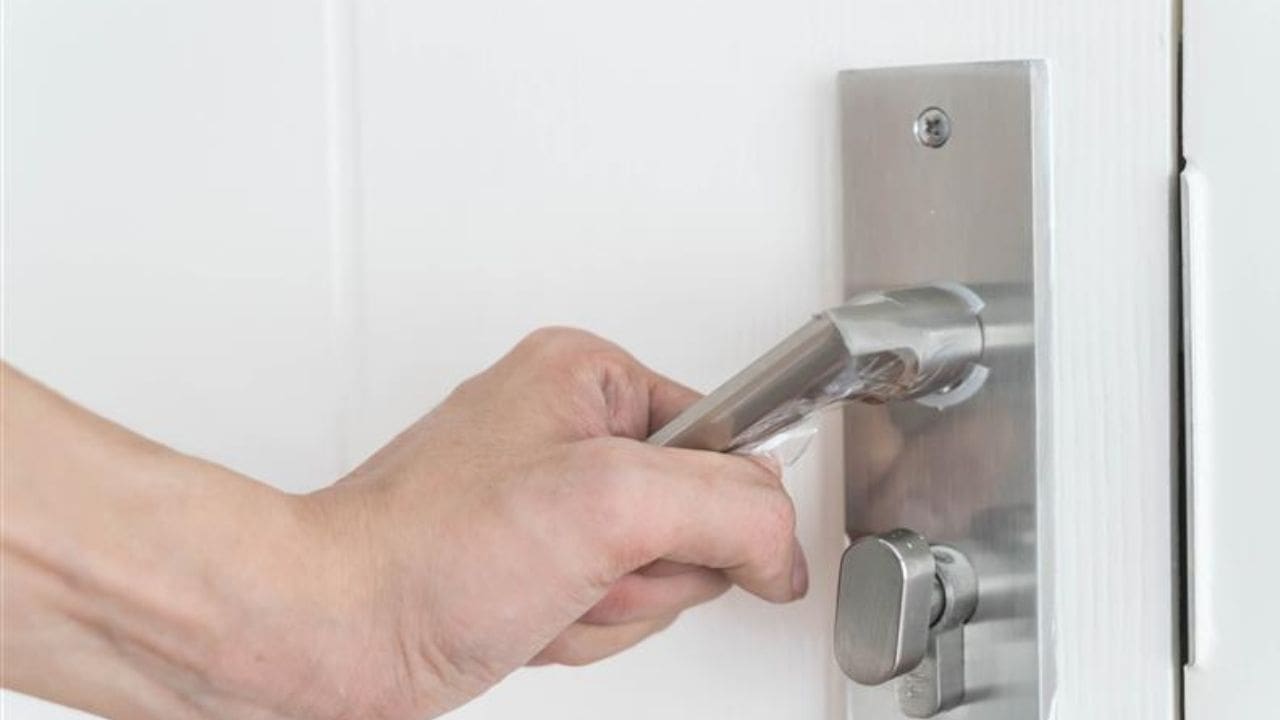Whether it’s your car door, front door, or an office lock, a frozen lock can leave you stranded in the cold, both literally and figuratively. Fortunately, there are safe and effective ways to deal with frozen locks and knowing when to call a professional like a Commercial Locksmith, Residential Locksmith, or even a 24/7 Emergency Locksmith can save you time, stress, and potentially costly damage.
In this guide, you’ll learn why locks freeze, how to safely unfreeze them, what not to do, and when it’s time to call in the experts.
Why Do Locks Freeze?
Locks freeze when moisture gets inside the mechanism and temperatures drop below freezing. This can happen through rain, melting snow, or even condensation forming in the lock.
Once frozen, the inner pins and tumblers that allow the key to turn become stuck, making it impossible (or risky) to force the lock open without damaging it.
Common Areas Affected:
-
Home front doors
-
Business entryways
-
Garage locks
-
Vehicle locks
-
Padlocks on gates or storage units
Both residential and commercial properties can be affected, which is why both Residential Locksmiths and Commercial Locksmiths see a spike in calls during winter months.
How to Safely Unfreeze a Frozen Lock
If you find yourself locked out due to ice, don’t panic. Here are safe and effective ways to unfreeze a frozen lock:
1. Use a Lock De-Icer
A lock de-icer is one of the most efficient tools designed specifically for this problem. These products contain alcohol-based solvents that quickly melt ice without harming the lock’s internal components.
How to use:
-
Insert the de-icer nozzle into the keyhole.
-
Squeeze gently to release the solution.
-
Wait 30–60 seconds, then try inserting your key.
You can purchase de-icers at most hardware stores or automotive shops and they’re small enough to keep in your bag, car, or pocket during winter.
2. Apply Rubbing Alcohol or Hand Sanitizer
If you don’t have a commercial de-icer on hand, rubbing alcohol or alcohol-based hand sanitizer can work in a pinch. The high alcohol content helps lower the freezing point of the water in the lock.
Steps:
- Apply a small amount of hand sanitizer directly to the key.
-
Insert the key into the lock gently.
-
Jiggle slightly to help distribute the alcohol inside the mechanism.
-
Repeat as needed, but avoid forcing the key.
This method works for both residential and commercial locks and is especially useful if you’re in a remote area without immediate access to a store or a 24/7 emergency locksmith.
3. Warm the Key
Heating your key slightly can help melt the ice inside the lock, but this method requires caution.
How to do it safely:
-
Use a lighter, match, or hairdryer (if indoors or near a power source) to warm the key.
-
DO NOT overheat the key – it should be warm to the touch, not glowing hot.
-
Insert the warmed key slowly into the lock and try to turn it gently.
This is a popular DIY trick but should be used carefully, especially around plastic lock covers or painted surfaces.
4. Use a Hairdryer or Heat Gun
If you’re dealing with a home or commercial door and have access to power, a hairdryer can be a simple and effective solution.
Steps:
- Set the dryer to a warm setting (not too hot).
- Hold it 6 – 8 inches from the lock.
- Warm the area around the keyhole for a few minutes.
- Try inserting the key again.
This works well for Residential Locksmith issues like frozen front doors or garage locks but may not be ideal for car locks when you’re stranded outdoors.
5. Spray WD-40 or Graphite Lubricant
WD-40 or dry graphite lubricant can help remove moisture from inside the lock and prevent future freezing.
Tip: Use WD-40 sparingly, and never combine it with de-icers or alcohol – it could cause residue build-up. Graphite is cleaner and ideal for long-term lock care.
What NOT to Do
When dealing with frozen locks, it’s important to avoid certain common mistakes that can make the problem worse or cause permanent damage.
Don’t Pour Hot Water on the Lock
It might seem like a quick fix, but pouring hot water over a frozen lock can:
-
Crack the lock from thermal shock
-
Freeze again almost instantly in sub-zero temperatures
-
Cause internal rusting over time
Don’t Force the Key
Turning the key too hard in a frozen lock can bend or break the key, potentially lodging it inside the cylinder. If the key feels stuck, stop and try one of the methods above—or call a 24/7 emergency locksmith for help.
Preventing Frozen Locks in the Future
An ounce of prevention goes a long way especially when dealing with winter conditions.
Tips to Prevent Freezing:
-
Apply a lubricant (graphite or silicone-based) before cold weather hits.
-
Cover padlocks with plastic bags or protective covers.
-
Use weatherproof lock covers for outdoor or garage locks.
-
Check weather stripping and door seals to minimize moisture buildup.
Both Residential Locksmiths and Commercial Locksmiths often offer seasonal lock maintenance services to help prepare for winter. A quick check-up before the cold sets in can save you a lot of trouble later.
When to Call a Locksmith
Sometimes, even with your best efforts, a frozen lock just won’t budge or worse, you’ve damaged it trying. That’s when it’s time to bring in the professionals.
Call a 24/7 Emergency Locksmith if:
-
You’re locked out of your home, business, or car in freezing conditions
-
Your key breaks inside the lock
-
You’ve tried DIY methods without success
-
The lock is showing signs of internal damage
Professional locksmiths use specialized tools and techniques that are safer and more effective than DIY methods. They can also inspect the lock for damage and recommend repairs or replacements if needed.
Choosing the Right Locksmith for the Job
Not all locksmiths offer the same services, so it’s important to choose the right type:
-
Residential Locksmith: Best for home locks, front doors, garages, and mailbox locks.
-
Commercial Locksmith: Experts in office buildings, storefronts, warehouses, and high-security locks.
-
24/7 Emergency Locksmith: Available any time, day or night, for urgent issues like lockouts or frozen locks.
If you’re located in a colder climate, look for a locksmith service that specializes in cold-weather lock care and offers fast, mobile response.
Final Thoughts
Frozen locks are an annoying but manageable part of winter. With the right tools, a little patience, and preventive care, you can tackle most frozen lock issues on your own. But when in doubt or when dealing with a lockout – Call WFX, a trusted Residential Locksmith, Commercial Locksmith, or 24/7 Emergency Locksmith for professional assistance.




